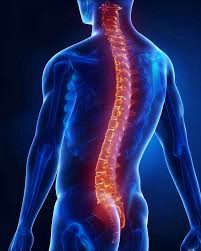Spine is the most crucial and stable part of the body. It has to do multiple roles of providing stability and movement according to the activities we perform everyday. However there has been a rapid increase in issues related to it due to various factors like lifestyle, work and stress etc. We must understand that pain is a symptom when the body fails to rectify/ compensate for the trauma, ironically most of us attend to a doctor or a therapist only when we have pain. The body not only is an excellent machine which tries to repair by itself first when going through stress or an injury but also gives warning signs in the form of pain and change in posture or body structure when it can no longer do something by itself. We all know about how important it is to stand upright, but seldom do we know that the hip and shoulder also play an important role in giving the shape to the spine. To know if the spine is aligned well, “Quadruped position” helps to pick up the subtle difference of the change in the spinal alignment which is a crude marker / indicator, that it needs to be fixed before it gets worse. We can self-assess the spine by following these basic steps, so go ahead and give it a try!

How to go in a Quadruped Position:
– Go on all fours. Place the knees right below the hip and hands right below the shoulder.
– Keep the elbow straight and head in neutral.
– Hold in this position for at least 30 seconds to 1 minute.
– Take a picture from the side view at your eye level with a bright background.
– Do not take guidance on correcting the posture while taking a picture.
– Give a signal if you feel the body is in neutral to go ahead with the picture.
– Wear body hugging clothes to appreciate the spinal alignment.
Ideally the spine should appear straight and shouldn’t have exaggerated curves. Faulty spinal alignment can appear as sagging head, sagging back or hunching back. Any difference in this posture is likely an indicator that spine has to be addressed to prevent future injuries. Remember, prevention is better than cure.
There are various exercise in the Quadruped Position, however the basic alignment should start from neutral to give optimal results. So getting your basics right is more essential than doing complicated exercises.

The Quadruped Position can also be a beginner for somebody who is skeptical to start with plank exercise, it provides a basic form. Quadruped is not as taxing as a plank or a push up on some of the other muscle groups, so it also provides you with an opportunity to focus on shoulder and hip. It can be a great carry over exercise for push-ups and planks in this way. The ability to get into and maintain this position is also a great indicator about the integration in primitive reflexes in children.
The advantages of bearing weight on all four are they provide greater stability to the hip and shoulder joints. Weight bearing on most joints give a feed back to the brain and increases the perception of sensation to the joints.
We rarely move one joint at a time (even when you think it might just be one joint), therefore, using these training tools also give us a chance to integrate multiple joint movements together and is important to regain or improve functional movement. Being able to coordinate movement of multiple joints helps improve balance, overall coordination, and efficiency in movement in variations of Quadruped position. They also serve as a greater tool to assess the strength and endurance of the core muscles too.
For a better understanding there is a comparison of a good and bad position.


If unsure about the posture or whom to contact and more articles about health and fitness, drop me a mail [email protected]
Originally published at medium.com


